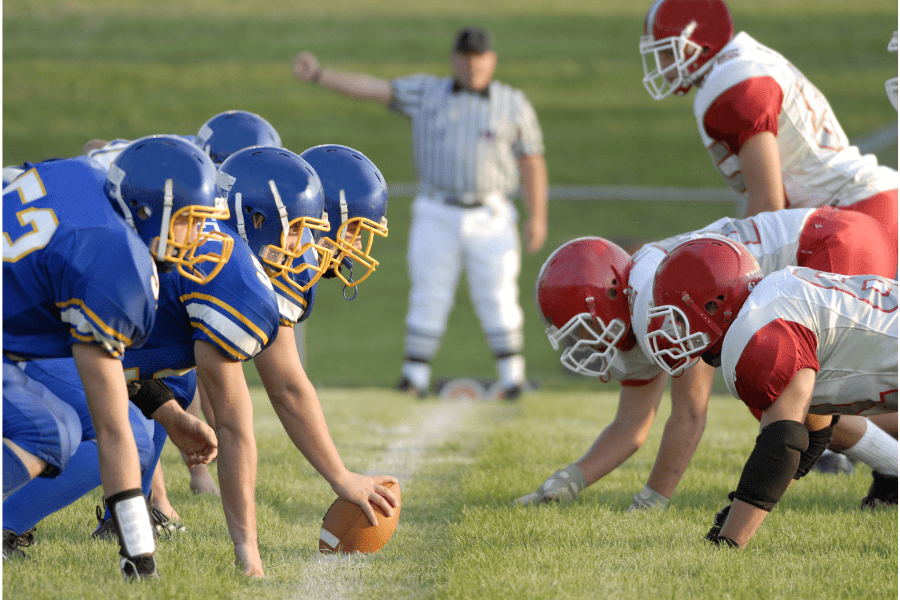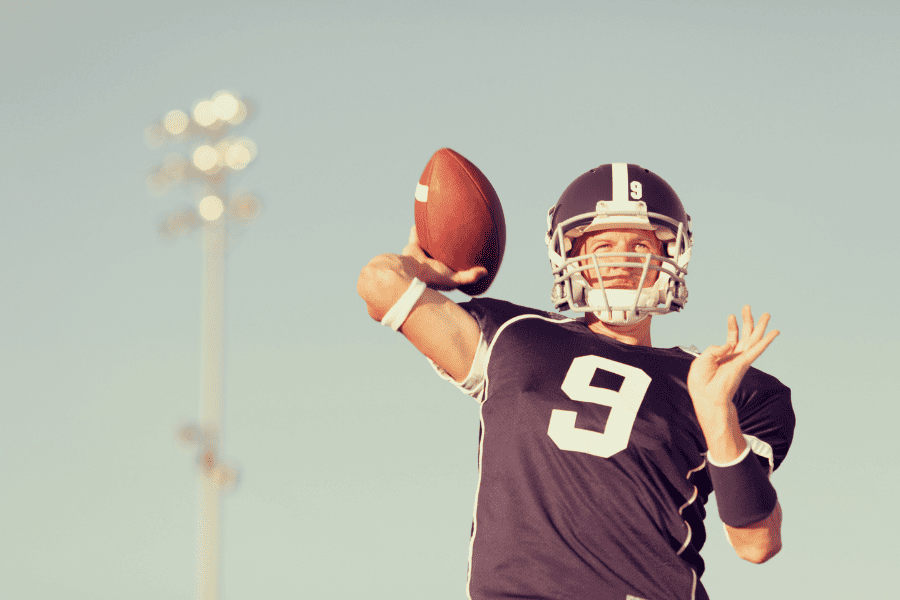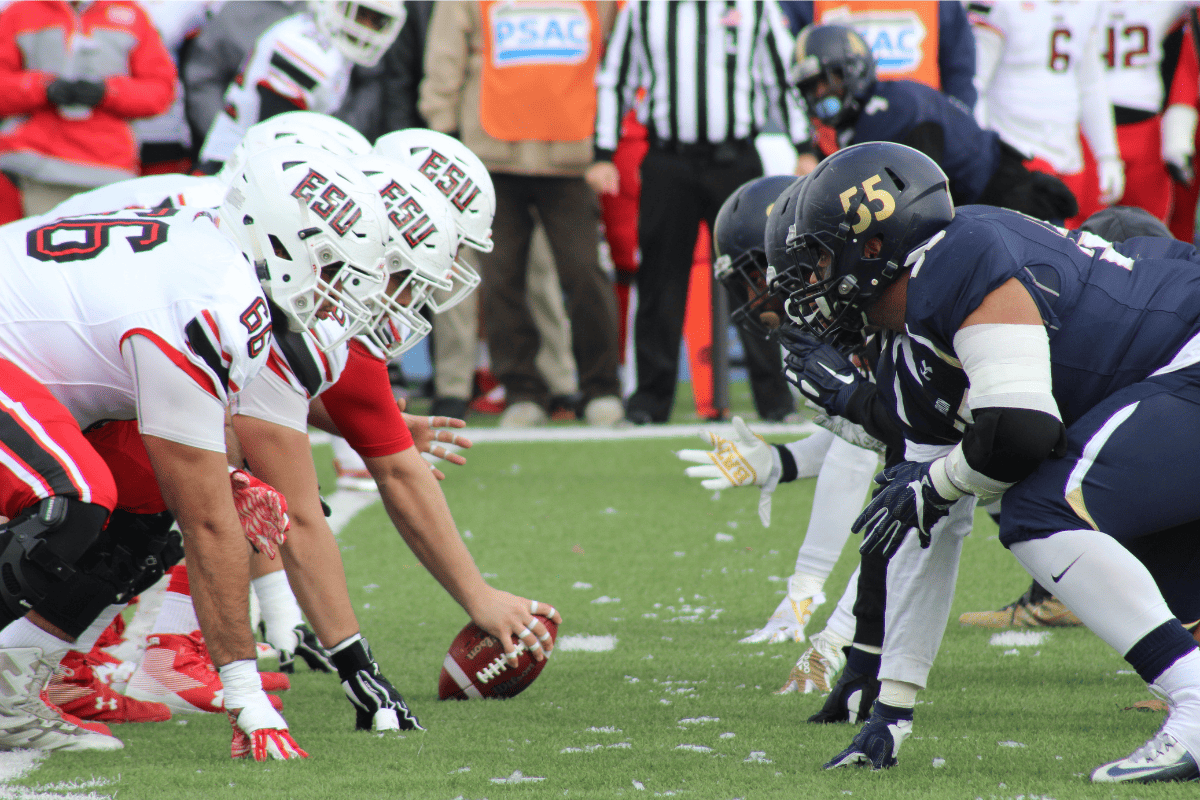What is the Line of Scrimmage in Football?
The “line of scrimmage” is a concept that’s integral to understanding how football is played.
It refers to an imaginary line that runs from sideline to sideline beyond which a team cannot pass until the next play has begun. Its role in football is crucial, as it is the starting point for each new play, determining the formation and strategy that both teams will implement.
Understanding the line of scrimmage is essential for any fan or player who wishes to fully comprehend the game’s rules and strategies.
Definition of the Line of Scrimmage
In its most basic definition, the line of scrimmage is an imaginary line on the field of play in football that stretches from sideline to sideline. The location of this line is determined by the position of the football at the end of the previous play and remains fixed until the commencement of the next play.
Function of the Line of Scrimmage Within a Game

The line of scrimmage serves multiple essential functions within a game.
Most importantly, it sets the stage for the commencement of each new play. The offensive team lines up on one side of the line, with the defensive team lining up on the other. This starting position influences the strategies and formations that both teams will use in the upcoming play.
Furthermore, the line of scrimmage plays a critical role in maintaining the structure and order of the game. It determines where the ball is snapped from, regulates player positioning before the play begins, and enforces rules about offside and neutral zone infractions.
The line of scrimmage also helps to measure progress. When an offensive play ends, the location of the ball sets the new line of scrimmage, showing how much ground has been gained or lost. The distance from the line of scrimmage to the first down line often directly influences the tactical decisions made by the offensive team.
Significance of the Line of Scrimmage
The “line of scrimmage” plays an important role in strategy and it also dictates many of the rules we see within the game of football.
Influence of the Line of Scrimmage on Play Strategies
The line of scrimmage plays a fundamental role in dictating play strategies in football. From an offensive perspective, the location of the line of scrimmage determines what type of play the team may choose to execute.
For instance, if the team is close to the end zone (or gaining a first down), they may opt for a running play to gain shorter, more certain yardage. On the other hand, if they need significant yards to pick up a first down they’re more likely to pass.
Role in Determining Penalties
The line of scrimmage also plays a crucial role in enforcing the rules of the game, particularly those related to player positioning before the play begins.
An “offsides” penalty occurs when any part of a player’s body is beyond their side of the line of scrimmage when the ball is snapped. Similarly, “encroachment” is a penalty given when a defensive player crosses the line of scrimmage and makes contact with an opponent before the ball is snapped.
“Too many men in the backfield” is a penalty that occurs when the offense does not have at least 7 players lined up against the line of scrimmage (leaving 4 players in the backfield).
Understanding and respecting the line of scrimmage is thus paramount to avoiding costly penalties.
Impact on Decisions Made by Quarterbacks

Lastly, the line of scrimmage impacts the decisions made by the quarterbacks on the field. The quarterback, who typically receives the ball directly behind the line of scrimmage to start the play has to be aware of the line of scrimmage at all times.
First, if a quarterback scrambles and runs past the line of scrimmage they can no longer throw a forward pass – doing so is a penalty.
Throwing the ball away, somewhere where it’s uncatchable by either team, is a tactic used by quarterbacks when they are in danger of being sacked. However, they must ensure that they are outside the tackle box and throw the ball beyond the line of scrimmage.
If they fail to do either of those things the play results in a penalty called “Intentional Grounding”.
Finally, throwing a forward pass beyond the line of scrimmage that isn’t caught is simply an incomplete pass. However, a backward pass that is behind the line of scrimmage is considered a fumble and can be picked up and advanced by the defense.
Final Thoughts
The line of scrimmage, while a seemingly simple concept, holds a place of profound importance in the game of football. Serving as the launching point for every play, it dictates the organization of both offensive and defensive strategies and defines the starting point from which teams advance or defend.
Its location influences the decisions made by coaches and players, shapes the outcomes of games, and plays a crucial role in enforcing the rules of the sport, including determining penalties like offsides and encroachment.
By understanding and appreciating the role of the line of scrimmage, we can better celebrate the moments of strategy and skill that make football the exciting and dynamic sport that it is.

